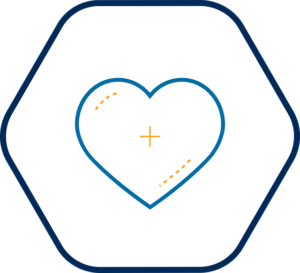
Oxford University is steeped in traditions a world away from the modern, digital era. The world’s oldest English-speaking university was founded in 1096, just 30 years after the Battle of Hastings and more than a century before the Magna Carta was signed.
But at just 25 years old, the university’s business school isn’t wedded to centuries-old traditions, enabling Saïd Business School (SBS) to operate at a faster pace of change compared to its parent institution.
Andy Faulkner, Head of Product Development and Delivery at Saïd Business School, University of Oxford, explains:
The university is quite rightly heavily governed, reputationally quite risk averse, and tends to do things a little bit slower than perhaps we would like to.
Case in point: SBS has been able to develop and launch programs around sustainable finance, sustainable leadership, climate emergency for leaders and programs in response to climate crisis actions, all over the last five years, responding nimbly to current global trends.
The college is also able to move relatively quickly when delivering broader infrastructure or IT projects, and then bring the university in at a later, convenient time, notes Faulkner:
What’s been very helpful is the business school has been in a position to pilot initiatives on several occasions, that the university has later benefited from.
One of these initiatives is SBS’s deployment of Salesforce. The initial program of works focused on improving efficiency in ways of working within the business school. But this is now spilling out into other areas of Oxford University such as admissions, where they are seeing the benefits of a unified data structure and how that could help lead to a more effective way of operating. Faulkner says:
Those conversations are definitely growing now. The piloting and agility that the business school has is often a precursor to the university moving.
While SBS is pioneering change and modern technology at the university, its first incarnation of Salesforce wasn’t a complete success. The school first started using the tech in 2016, and it was pretty much an out-of-the-box Sales Cloud instance.
At that time, everybody at SBS had a different way of working and consequently the project delivered a number of very different instances that weren’t then particularly easy – if at all – to pull together into a business school-level view of activity. This led to the school deciding to redo the implementation four years later. Faulkner recalls:
“The big flip has been Salesforce Mk 1 was ‘department first, school second’; Salesforce Mk 2 was ‘school first, department second’. It was completely turning the design and development process on its head, which was a significant shift. We have to now think about how this works across the piece, come together, collaborate and build something that’s going to work at the high level rather than facilitating a system that addresses current ways of working in independent departments.”
Pandemic prompt
The reworking of Salesforce was prompted by the COVID-19 pandemic, and the arrival of Natasha Heaton, SBS Director of Service Delivery and Change. Heaton joined at the start of 2020, tasked with overseeing the development of the new building SBS will be opening in a few years.
When COVID-19 hit, the university paused all building projects and Heaton started looking at other programs that centered around change. There were three pillars SBS wanted to focus on: data covering both compliance and a unified data architecture; putting the customer at the heart of everything; and getting consistency around workflows and processes.
Faulkner happened to be the first person Heaton spoke to about the project, and he promptly informed her that the business school’s iteration of Salesforce just wasn’t working. Heaton says:
I worked with Andy to understand what his pain points were and realized that we’d actually built it originally around 20 departments, different ways of working, rather than setting it up correctly from the get-go. Our data was 25 years’ worth of data in different places, and we had 20 departments doing it 20 different ways.
Phase one of the second Salesforce project has been fixing those problems and addressing the three pillars. SBS is about to start on phase two, which is the growth area. Heaton adds:
Phase one, we had to get that unified data architecture. It was a huge amount of work, working out scripts, getting rid of fields that have grown up over the years. Now we’re looking at capabilities and outcomes, which is a far more exciting place to be.
Second time
Despite having to start again from scratch, Heaton is quick to point out there was never any question that the technology was in any way at fault:
It was definitely the way we’d implemented it and tried to use it. We were just completely siloed and each department was very much thinking about their stakeholder requirements rather than the customer requirements. As soon as we flipped it and looked at that customer-first way of working, it was really easy to see what we needed to do.
Under the original rollout, governance around Salesforce development was pretty non-existent: individual departments would make requests, those requests would be fulfilled, and the notion of a single, coherent system got further away. One of the big shifts with the latest version is around change requests, which are now carefully considered regarding how they impact the wider structure. Faulkner says:
It’s asking questions around does this need to be done more broadly, what’s the actual user story here, what are you trying to achieve rather than ‘I want to add x field into this object’. The governance around it now is much more robust and allows us to maintain that one school ideology.
SBS approached the work as a change program as opposed to a technology project – a change for the whole school, in the way people work, in the way they deal with customers and their data – and ensured all staff were included from the start. The resulting solution was agreed across the whole school, by all the different teams and also all the senior leadership. However, the response has been mixed. Heaton explains:
There are some departments where they’ve got to the point where they couldn’t work anymore with the way they were working, and they could see that this was going to be a huge benefit. There were other departments that were not using Salesforce and were using spreadsheets; wrestling those spreadsheets off them has been quite difficult.
To overcome this reluctance, SBS has run a lot of workshops looking at the end-to-end customer journey, and has focused on helping staff see common areas of the new way of working rather than the differences.
SBS is now using Salesforce Service Cloud with Education Data Architecture (EDA), a version aimed specifically at higher education institutions. This offers a wider range of objects covering the range of activities that take place at a university, and puts students and alumni at the center. It is also using Marketing Cloud and Experience Cloud for building out student communities and centralized points of engagement and information.
Benefits from an IT perspective include reducing the number of systems the school needs to maintain, and as it continues to add more capabilities to the Salesforce platform, it can dispense with further standalone pieces of software. SBS is looking at Admissions Connect next, and is also considering modules for coaching, room booking and event booking. Heaton adds:
The school hosts a huge number of events. That’s something we want to bring into Salesforce so we can understand what people are attending and why, and make sure we are delivering the best for the customer.
Around the data compliance aspect, auto deletion of records has been hugely beneficial as SBS is no longer relying on large, annual processes to complete this task.
But most important is the customer view, which is vital in forging ongoing and close relations with the 2,000 new students who join the school each year, and its 50,000-odd alumni.
EDA helps SBS better understand how people learn through the school, whether via the online portfolio, its flagship MBA, or return learners, and tracks their different interactions and involvement whatever the department or channel. Heaton notes:
From the moment that they have a first touch point with us all the way through to alumni status, it’s being able to offer them what they need at each step of the way.
For more diginomica stories from Dreamforce 2022, visit our dedicated Dreamforce event hub.


